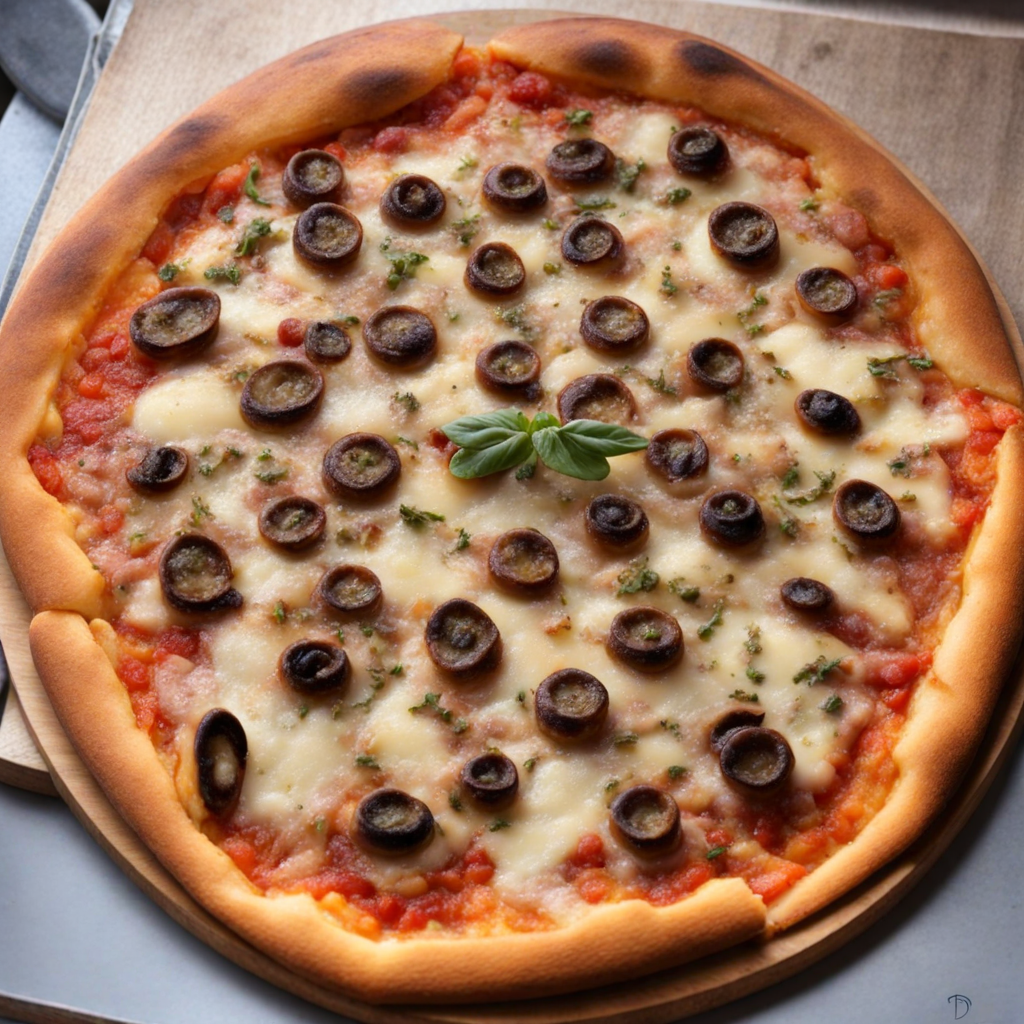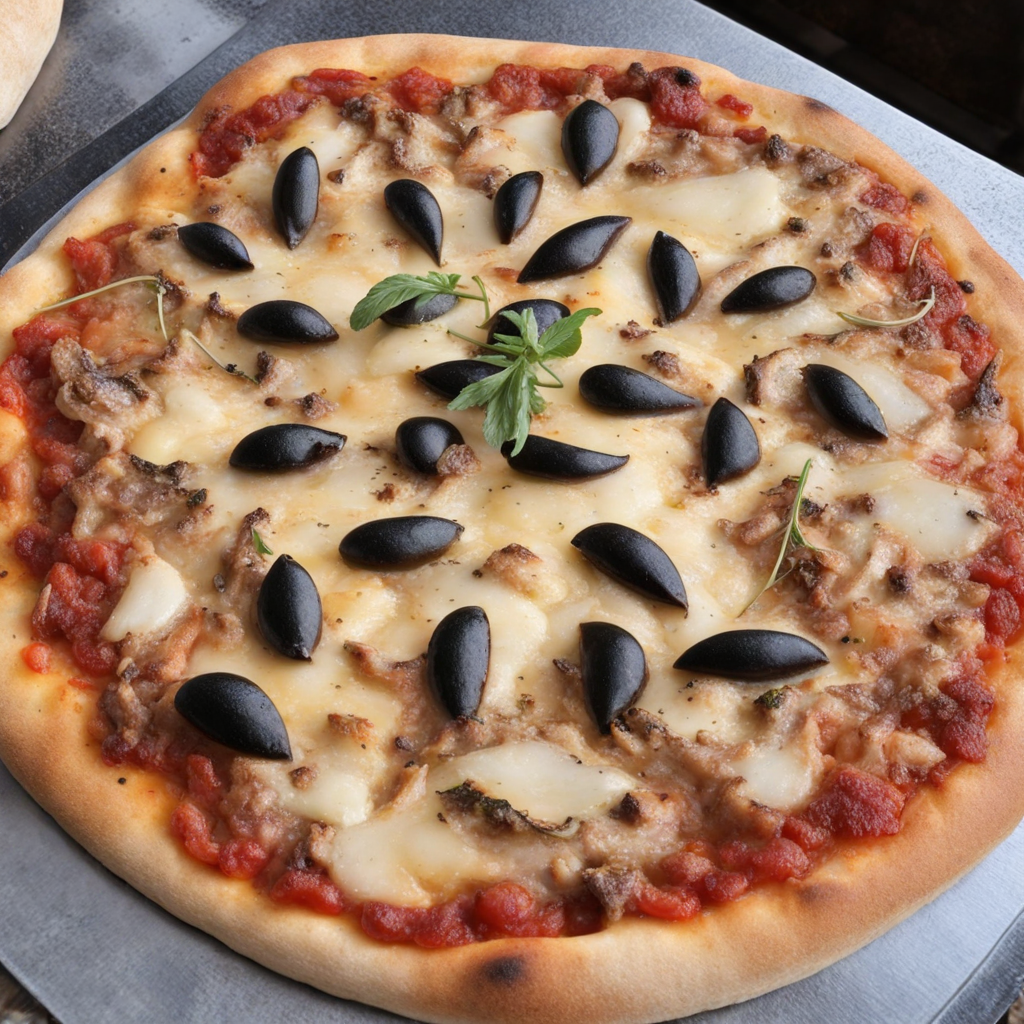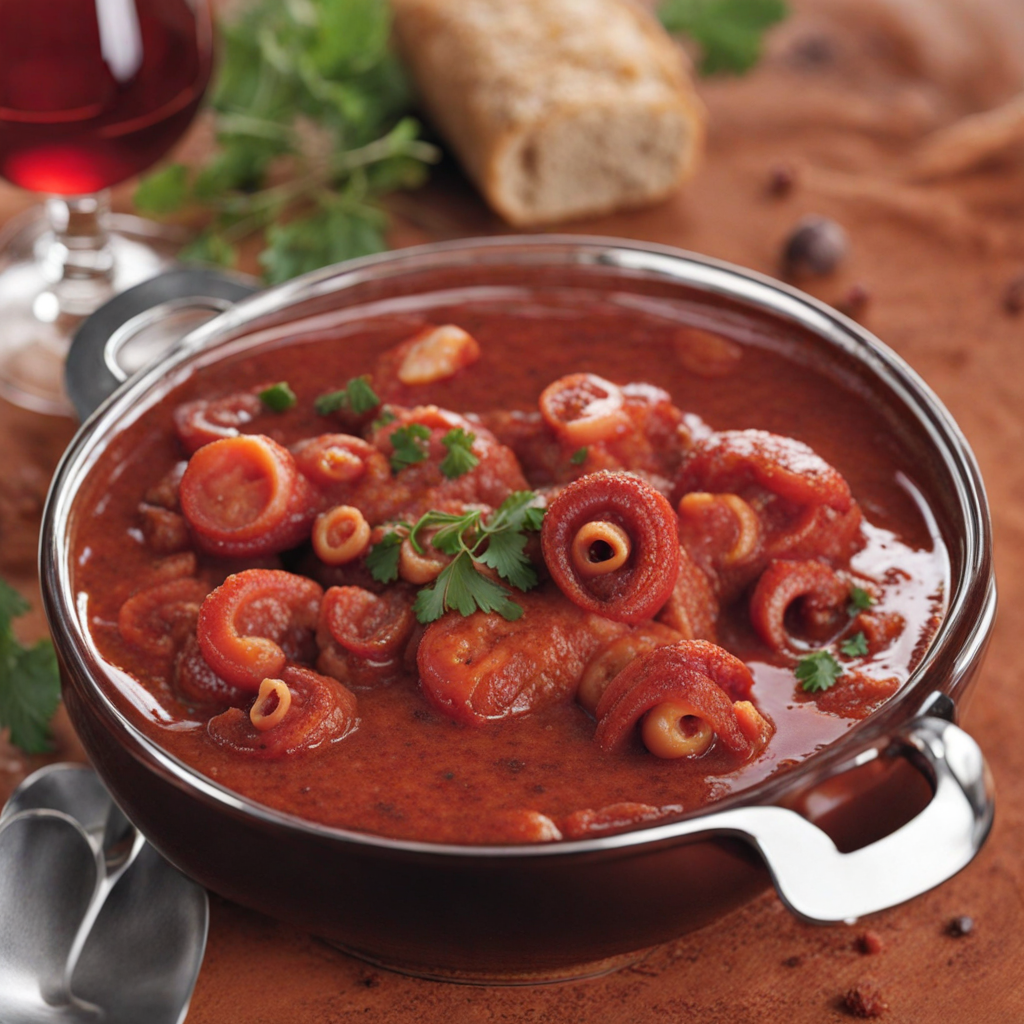Maltese Pizza
Ftira is a traditional Maltese bread that embodies the essence of the island’s culinary heritage. This rustic flatbread has a long history, dating back to the time of the Phoenicians, who are believed to have introduced baking techniques to Malta. Over centuries, ftira has evolved, becoming an integral part of Maltese culture, often enjoyed in various forms and with an array of fillings, making it a versatile staple in local cuisine. The flavor of ftira is distinctively wholesome and slightly sour, a result of the fermentation process involved in its preparation. The texture is characteristically chewy on the inside with a crusty exterior, providing a delightful contrast in each bite. The bread is typically made using simple ingredients, which include flour, water, salt, and yeast. The use of high-quality local flour contributes to its unique taste and texture, while the natural fermentation process enhances its flavor profile. Preparation of ftira is a labor of love that reflects the traditional baking techniques of Malta. The process begins with mixing flour, water, salt, and yeast to create a dough, which is then kneaded until smooth and elastic. The dough is allowed to rise, typically for a few hours, during which it develops its flavor. Once risen, the dough is shaped into a round or oval flatbread and left to proof again before being baked in a hot oven. The baking process is crucial, as it imparts a delightful crust and a chewy interior, characteristic of authentic ftira. One of the
How It Became This Dish
The History of Ftira: Malta's Beloved Bread #### Origins Ftira, the traditional Maltese bread, has deep roots in the Mediterranean culinary landscape, reflecting the island's rich history and diverse cultural influences. The origins of ftira can be traced back to the time when the Phoenicians settled in Malta around 800 BC. These ancient seafarers brought with them their knowledge of baking and bread-making, which laid the foundation for the island's future culinary practices. The word "ftira" itself is believed to derive from the Arabic word "fṭīr," which means "bread." The cultural exchanges that occurred through trade, warfare, and colonization over centuries have shaped the recipe and significance of ftira, making it a quintessential element of Maltese identity. #### Cultural Significance Ftira is more than just a loaf of bread; it embodies the spirit of Maltese culture and tradition. Traditionally, it is a round, flat bread with a soft, chewy interior and a crusty exterior, making it perfect for absorbing flavors. In Maltese households, ftira is often associated with family gatherings, picnics, and celebrations, serving as a vessel for various fillings that reflect the island's agricultural bounty and culinary creativity. One of the most iconic ways to enjoy ftira is as a sandwich, filled with local ingredients such as tuna, capers, olives, tomatoes, and onions. The bread's texture and flavor complement the freshness of the fillings, creating a harmonious blend that tantalizes the taste buds. It's common to see ftira served at local markets and food festivals, where it plays a central role in the communal experience of sharing and enjoying food. #### Development Over Time As Malta evolved through various historical epochs, so too did the ftira. The Knights of St. John, who ruled Malta from 1530 to 1798, brought new culinary influences to the island. During this period, the baking method for ftira was refined, and the bread began to take on its distinctive shape and texture. The Knights’ love for elaborate feasts influenced the way ftira was served, leading to the introduction of various fillings and accompaniments. In the 19th century, the industrial revolution brought significant changes to Malta's food production. The introduction of commercial bakeries made ftira more accessible to the general population, and it became a staple food for workers in various sectors. The bread’s affordability and versatility enabled it to remain a popular choice across different social classes. As Malta entered the 20th century, the impact of globalization began to change the culinary landscape. While traditional recipes and practices were at risk of being overshadowed by international cuisine, the resurgence of interest in heritage foods helped revive the tradition of ftira. Local bakers began experimenting with different flours, including whole grain and organic options, catering to contemporary tastes while honoring the traditional methods passed down through generations. #### Modern Times In recent years, ftira has experienced a renaissance, driven by a broader movement towards local, sustainable, and artisanal food. As Maltese cuisine gains recognition on the global stage, ftira is often featured in food blogs, cookbooks, and culinary tours. Chefs and home cooks alike celebrate this bread as a symbol of national pride, showcasing its versatility in both traditional and innovative ways. Contemporary interpretations of ftira highlight its adaptability; it can be found stuffed with everything from traditional Maltese ingredients to modern fillings like pesto, grilled vegetables, and gourmet cheeses. The rise of food markets and pop-up eateries in Malta has further cemented ftira's place in the culinary scene, with vendors offering unique twists on this classic bread. Moreover, the growing interest in food heritage and local gastronomy has led to initiatives aimed at preserving traditional baking techniques. Workshops and courses on making ftira are becoming increasingly popular, allowing younger generations to connect with their culinary roots. This revival is not just about the bread itself; it represents a broader appreciation for the culture and history that ftira embodies. #### Conclusion The story of ftira is intricately woven into the fabric of Maltese life. From its ancient origins to its modern-day interpretations, ftira reflects the island's journey through time, marked by cultural exchanges and resilient traditions. As Malta continues to embrace its rich culinary heritage, ftira stands as a testament to the island's enduring love for food that nourishes not only the body but also the soul. In every bite of ftira, one can taste the history, the community, and the vibrant spirit of Malta. Whether enjoyed in a bustling village market or at a family gathering, ftira remains a beloved symbol of Maltese culture, inviting both locals and visitors to savor the flavors of this Mediterranean gem.
You may like
Discover local flavors from Malta







